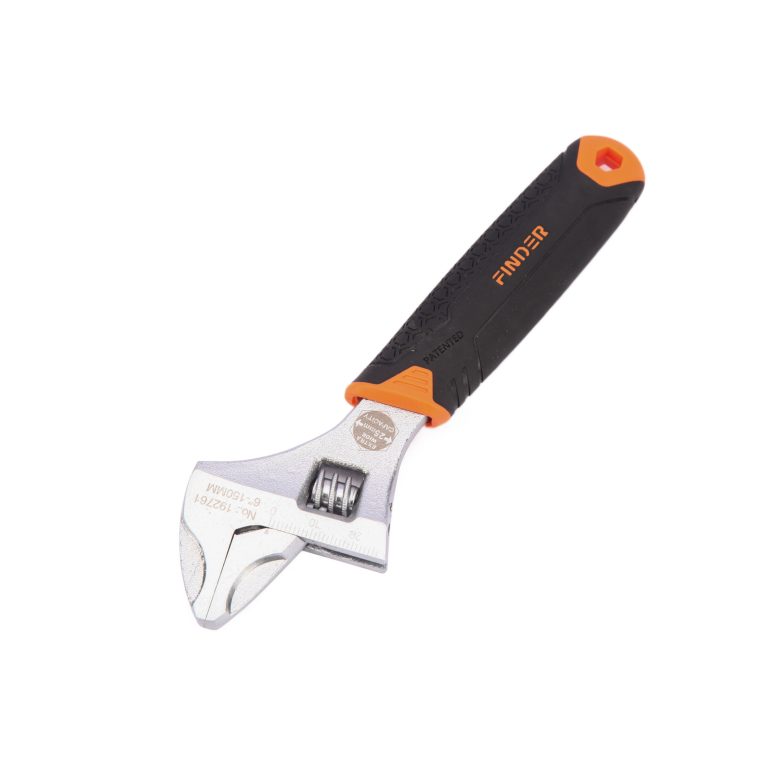Understanding Adjustable Wrenches
Versatile and Essential Tools
Adjustable wrenches, also known as adjustable spanners or shifting spanners, are indispensable tools in a wide range of applications. From simple do-it-yourself (DIY) projects to professional settings, these versatile tools are used for gripping, turning, and holding various objects. Their adjustable jaws make them suitable for different sizes of nuts, bolts, and other fasteners. Whether it’s tightening a loose bolt or nut or holding an object firmly in place, the adjustable wrench is an essential tool in any toolbox or workshop.

Wrench Types
Adjustable Wrench Varieties
- When it comes to adjustable wrench varieties, there is a wide range of options available to suit different needs. The crescent wrench, also known as an adjustable end wrench, is one of the most common types. It features a thumbwheel that adjusts the width of the jaws, allowing it to fit various fastener sizes. On the other hand, the monkey wrench is another popular variety known for its sturdy build and ability to grip large nuts and bolts effectively. Both types have specific features and applications that make them suitable for different tasks, whether it’s general repairs or more specialized projects.
Specialized Wrenches
- In addition to general-purpose adjustable wrenches, there are specialized varieties designed for specific tasks such as plumbing or automotive repair. For instance, a pipe wrench is specifically tailored for gripping and turning pipes due to its serrated teeth that provide a strong grip without causing damage. Similarly, an adjustable spanner may feature a slimmer profile and longer handle, making it ideal for reaching confined spaces in automotive repairs. These specialized wrenches offer unique features to handle specific applications with precision and efficiency.
Choosing the Right Size
Selecting the Appropriate Size
When choosing an adjustable wrench, it’s essential to determine the correct size for the task at hand. The size of the fastener and the available space for maneuvering the wrench are crucial factors to consider. A properly sized wrench ensures a secure grip on the fastener, reducing the risk of slippage and potential accidents. By selecting the appropriate size, you can work efficiently and safely, whether it’s tightening a small bolt or working with a larger nut.
Variety of Sizes and Their Uses
Adjustable wrenches are available in various sizes, each designed for specific applications. Smaller wrenches are suitable for tasks requiring precision and access to confined spaces, while larger ones provide greater leverage for turning larger fasteners. Understanding the common sizes and their respective applications is key to selecting the right tool for the job. Whether it’s a compact wrench for intricate DIY projects or a robust one for heavy-duty industrial tasks, having a range of sizes ensures that you have the right tool for any situation.
Tool Maintenance
Proper Care and Maintenance
Maintaining your adjustable wrench is crucial to ensure its longevity and optimal performance. By following a few simple care practices, you can keep your spanner in top condition for years to come. Here are some essential maintenance tips to consider:
- Regular Cleaning: After each use, wipe down the wrench with a clean cloth to remove any dirt, grime, or debris. This prevents the accumulation of contaminants that could potentially affect the tool’s functionality.
- Lubrication: Applying a small amount of lubricant to the moving parts of the wrench helps prevent corrosion and ensures smooth operation. Be sure to use a lubricant suitable for hand tools to avoid any potential damage.
- Storage: Store your adjustable wrench in a dry environment away from moisture and extreme temperatures. Consider hanging it on a pegboard or placing it in a toolbox to protect it from damage and reduce the risk of misplacement.
By incorporating these simple maintenance practices into your routine, you can extend the lifespan of your adjustable wrench and maintain its reliability for various tasks.
Plumbing Applications
Utility in Plumbing
Adjustable wrenches play a vital role in plumbing applications, where they are commonly used for tightening and loosening various fittings such as nuts, bolts, and other connectors. The adjustable jaws of these plumbing tools provide versatility, allowing them to accommodate different sizes of fasteners commonly found in plumbing systems. Whether it’s installing new fixtures or making repairs, the adjustable wrench is an indispensable tool for plumbers and DIY enthusiasts working on plumbing projects.
Safety Precautions
When using adjustable wrenches in plumbing tasks, it’s crucial to adhere to safety measures to prevent accidents or damage. Proper handling of the tool is essential for safe plumbing work. Additionally, understanding the capabilities and limitations of the wrench ensures that it is used effectively and safely. By following safety protocols and using the wrench responsibly, plumbers can carry out their work efficiently while minimizing the risk of injuries or mishaps.
Exploring the Versatility of Adjustable Wrenches
Applications Across Various Industries
The versatility of adjustable wrenches makes them indispensable in a wide array of industries, from construction and automotive repair to plumbing and general maintenance. Their ability to accommodate different sizes of fasteners and provide a secure grip makes them an essential adjustable tool for professionals and DIY enthusiasts alike. Whether it’s tightening bolts in a mechanical assembly or making adjustments to plumbing fixtures, the shifting spanner is a go-to tool for various applications. Understanding the diverse uses of these wrenches underscores their importance as versatile and reliable tools in numerous industries.
